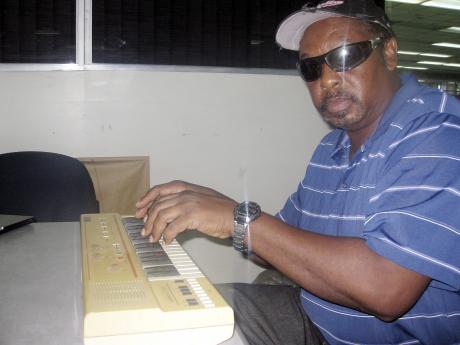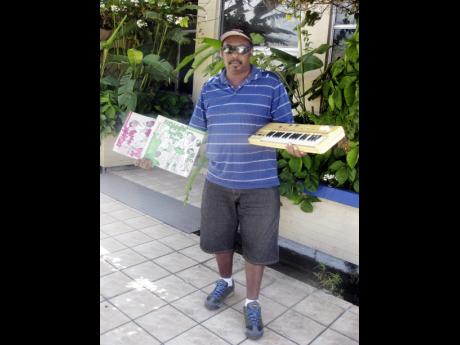Noel Davey Puts Sleng Teng On Record

For Reggae Month 2015, The Sunday Gleaner revisited stories about songs by persons who have a strong connection to February. There were songs by Bob Marley, Dennis Brown, Wayne Smith and William 'Bunny Rugs' Clarke. However, the story of Sleng Teng by Smith cannot be separated by the story of Noel Davey and the rhythm. Plus, it was a short month, so today we retell another angle of theSleng Teng story.
Seminal points in popular culture are notoriously difficult to pinpoint. Not so with the seismic shift of Jamaican music away from using live music for studio recordings, headlong into the world of making entire beats solely with synthesisers, or digital music as some lovingly or disparagingly term it.
It began with the Sleng Teng rhythm in 1985, on the Jammy's label, and has continued ever since, with the attendant debates about topics and musicality.
And unlike many turning points, there has not been much debate about the key figures in the movement in Waterhouse, St Andrew - keyboard player Noel Davey, singer Wayne Smith and producer Lloyd 'King Jammy' James.
Of the three, however, Davey is the least known and acknowledged - although he tells a story of the Sleng Teng creation in which he was the major player, literally and figuratively.
He says he recorded the rhythm in about December 1984 at Jammy's studio and "the whole thing came about when I got this Casio machine". It is a Casio MT-40, a small keyboard that can be operated by batteries and still works. Davey demonstrated that to The Sunday Gleaner by playing not only the Sleng Teng but also the rhythm to Anthony Redrose's Temper, which he made for Jammy's rival King Tubby.
Talented Youth
"Because I had a little melodica playing, people used to see my talent and say if this youth got a keyboard, he would do a lot better. So when (reggae group) Wailing Souls went up to America, Garth Dennis (one of the group's members) came to me and said 'You know Bunny send a keyboard for you?'
"Me and the Waterhouse groups had a good link - Black Uhuru, Wailing Souls, Junior Reid, Half Pint ... . Them call the corner Big Road; I used to go around there. They used to see certain talent in me, so they go abroad and get this keyboard and bring it come," Davey said.
Davey indicates the keyboard with his left hand as he acknowledges the spirit of goodwill which brought him the Casio.
"This thing came out of people who actually thought about development, trying to help you," he said.
Smith, he said, entered the picture in the absence of Davey's friend and musical partner Neville Brown, who migrated and "that is when Wayne start to hang around with me".
He had the Casio MT-40 for "maybe a couple months" before the Sleng Tengpopped up from the resets and caught his ear. "We had it but fool around it. Sometimes you tell yourself that it really small," Davey said.
And he describes the moment when he first heard what became known as the Sleng Teng rhythm, named after Wayne Smith's song, as being "like a freak accident".
"What happen with this thing, because I still had my mind on bigger piano and bigger things. So we did fool around the buttons, because I even went around to Jammy's and I played a rhythm round there before Sleng Teng," Davey said.
He has not heard that rhythm since, unlike the Sleng Teng, which is a dancehall staple.
He said that the inspiration for Sleng Teng came from "the built-in one that came out. That was when me and Wayne Smith were there. By touching and touching some button, a sound came out". Davey quickly recreates the moment from nearly 27 years ago ("like you would be going like this now") and the famed Sleng Teng bass line, going at the speed of a doped-up sprinter, fills the small interview room at The Gleaner.
Even at that pace, though, Davey recognised something promising. "I said to Wayne, 'You hear that?'," he told The Sunday Gleaner. However, as they were just fooling around with the machine, the sound "went away".
It was relocated "after another couple of weeks" when again, Davey and Smith were with the machine and the sound came again, "but this time, I realise what happen, which button and how the delay go and everything".
Getting to the studio was another part of the process and Davey said "him decide him want to go to Jammy's. Is him have the link with Jammy's. I never really know Jammy's".
Reggae Tempo
Before that, though, Davey said "I finally put it down to this reggae tempo".
Again, he adjusts a knob on the Casio MT-40 and now the rhythm sounds like the Sleng Teng that has been recorded over hundreds of times, Tenor Saw'sPumpkin Belly and Bounty Killer's Lodge among the numerous popular recordings for which it forms the all-essential bedrock.
"Maybe at that speed," Davey said. "And of course, when we got there Jammy's said, him want it go down little bit more."
Rounding out the rhythm, Davey said "all the keyboard work was done by me", proceeding to play the phrases. The Sleng Teng was laid on a Sunday afternoon, the drum and bass coming from the machine's presets.
The Sleng Teng could have easily come out of another studio, as Davey said, "I went to Studio Mix with it and I rehearsed it with other people. Other people sing other songs on it, but it just happened that none of them was as serious as Jammy's ... . We went down to Channel One studio but we never get any time." The song that would have been recorded on the rhythm that became Sleng Teng was titled Rasta Philosophy.
Plus, there were producers who heard the rhythm and dismissed it as "too light".
Davey said Jammy "did hungry for something to move with", noting that Jammy had the ear to say "I want this to go on the air right now". Plus, he put handclaps on the rhythm.
And Davey knows that there are those who would have preferred that the Sleng Teng had not come out.
"Some people even vex up to this day about what happen, say it change the whole thing," he said.




Add new comment